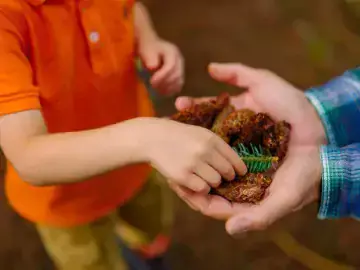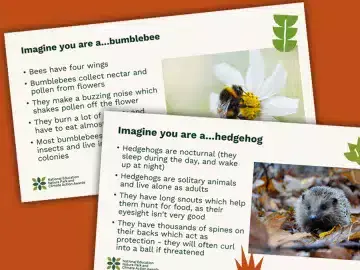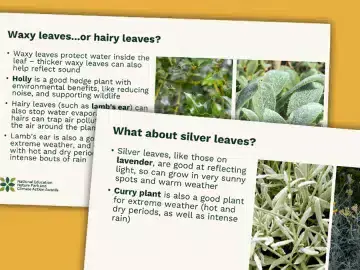
Anatomy of a tree
This is a quick activity to get learners moving and using their bodies to create different shapes. This activity is a good ‘icebreaker’ activity for the start of a session, or a quick way to focus attention back to learning.
Learners will be asked to become a different part of a tree using their bodies – from the roots to the leaves. They will need to work together to try and show how all the parts of a tree interact with each other. This activity can be done inside or outside; however, it is best done outside where learners can familiarise themselves with the space and look at the trees around them to help them.
Preparation
Resources
Step by step
- Before starting the activity, go through each different part of a tree with learners, and ask them to think about how they might become this shape. You can walk around your site and look at trees to familiarise learners with the different parts.
Split learners into groups of five or six. Introduce different parts of a tree: tree trunk, bark, leaves, roots, branches, and tree buds (flowers) and describe their functions. Now, have one learner from each group act out one part of the tree. The six learners should work together to create a tree.
Definitions and functions
Tree Trunk: To transport water from the roots to the crown
Bark: To protect the tree
Leaves: To absorb sunlight and produce energy for the tree
Roots: To soak up water and nutrients from the soil
Branches: To provide structure for the leaves and buds
Tree buds: To store energy for the winter months- Each group will have 5-10 minutes to create their shapes and work together to become a tree. Afterwards, invite each group to share their tree shapes with the rest of the group.
Reflection
Why is a tree designed the way it is? Do you know why tree leaves are green? Why are roots so important to the tree?
Curriculum links
This activity can be used to support curriculum knowledge and skill development in understanding the world and physical development, alongside enhancing nature education, with age appropriate adaptations.
What to try next

Leaf identification
Begin activity
Points of view for younger learners
Begin activity
Design a plant
Begin activityThumbnail image: © RHS, Credit: RHS / Jim Wileman